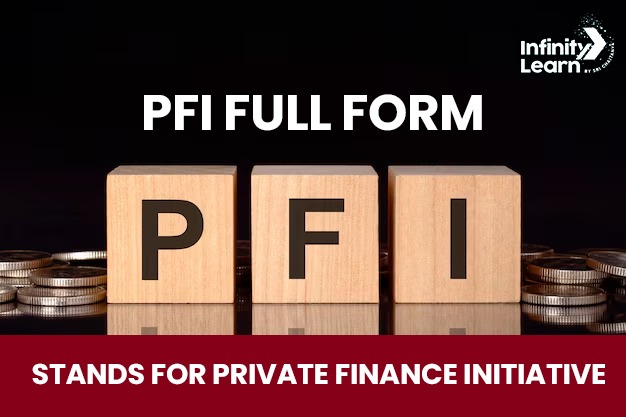Table of Contents
PFI stands for Private Finance Initiative, a public-private partnership model used primarily to fund and manage public infrastructure projects. It allows governments to collaborate with private companies to finance, build, and operate public assets such as hospitals, schools, roads, and prisons. PFI aims to leverage private sector efficiency and capital while delivering essential services to the public.

What is the Full Form of PFI?
The full Form of PFI is Private Finance Initiative. This funding strategy entails private sector investment in public infrastructure projects, with private organizations designing, building, financing, and occasionally operating facilities. The government repays private investors over time, typically via long-term contracts.
History and Origin of PFI
PFI was originally implemented in the United Kingdom in the early 1990s by Prime Minister John Major’s cabinet. It was intended to solve public sector budget constraints by soliciting private finance to fund public initiatives that do not require immediate public investment. The initiative aimed to improve infrastructure delivery by leveraging private sector experience and innovation.
How Does PFI Work?
The PFI approach involves the government identifying a public project and partnering with private corporations to finance and deliver the asset. The private partner plans and builds the facility, operates it for a specified duration, and maintains it during the contract. The government repays the private corporation via recurring payments known as “unitary charges” for the course of the contract, which normally lasts 25 to 30 years.
This paradigm shifts risks like building delays and cost overruns to the private sector, which promotes efficiency and accountability.
Also Check: Full Form Lists
Advantages of the PFI Model
PFI provides a number of advantages:
- Budget Relief: By distributing costs over time, governments avoid making significant upfront capital expenditures.
- Efficiency: Private businesses contribute knowledge, creativity, and operational and construction efficiency.
- Risk Transfer: Private partners take on the risks associated with construction and upkeep.
- Quality and Upkeep: Long-term agreements encourage private companies to keep their assets in good condition.
These benefits enable governments to complete infrastructure projects more quickly and efficiently.
Criticism and Challenges of PFI
Despite its advantages, PFI confronts criticism and obstacles.
- Long-term costs: Repayment responsibilities may exceed the project’s initial expenditures, increasing national debt.
- Lack of Flexibility: Long contracts may hinder the government’s ability to modify projects to changing requirements.
- Transparency Concerns: Complicated contracts can disguise costs and responsibility.
- Performance Issues: Some PFI projects have had poor service quality or delays.
When considering PFI, governments must balance the risks and rewards.
PFI in Different Countries
While PFI originated in the UK, it has been adopted worldwide with varying degrees of success:
- United Kingdom: The most extensive use of PFI, particularly in healthcare and education.
- Australia: Adopts PFI-like models for transport and infrastructure projects.
- India: Uses PPP models similar to PFI to develop highways and urban infrastructure.
- Canada and the USA: Employ public-private partnerships but with different frameworks and terminologies.
Country-specific regulations and economic contexts shape how PFI is implemented globally.
FAQs on PFI Full Form
What is PFI in government?
A private finance initiative enables the public sector to fund large public works projects through the private sector. PFIs relieve governments and taxpayers of the burden of raising funds for projects.
Who made PFI?
PFI was created on December 19, 2006, at a meeting in Bengaluru by the merger of three Islamic organisations: the National Development Front (NDF) in Kerala, Manitha Neethi Pasarai in Tamil Nadu, and the Karnataka Forum for Dignity in Karnataka.
Is PFI still active in India?
The Popular Front of India (PFI) was officially banned by the Indian government in 2022 due to alleged links to terrorism and public order disruption. Despite the ban, PFI activities reportedly continue covertly through groups like the Social Democratic Party of India (SDPI), especially in South India. Investigations by authorities, including the Enforcement Directorate, are ongoing to curb their operations and funding, some of which may involve the Gulf region.
What is the political wing of PFI?
Social Democratic Party of India (SDPI) was formed as the political wing of PFI.
What is the rank of India in PFI?
India is placed 151st on the World Press Freedom Index 2025. India ranks below 150 other countries in terms of press freedom, with a total score of 32.96. Reporters Without Borders (RSF) compiles the World Press Freedom Index each year to evaluate the level of media independence and freedom in various countries.
What replaced PFI?
In 2012, the PFI model was replaced byt the PF2 model.









